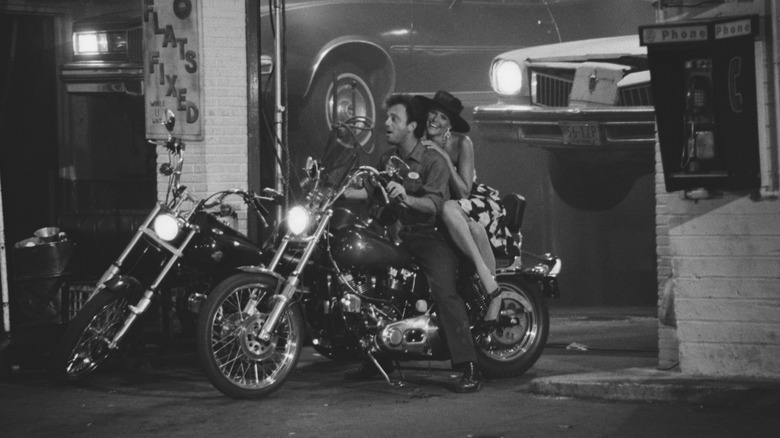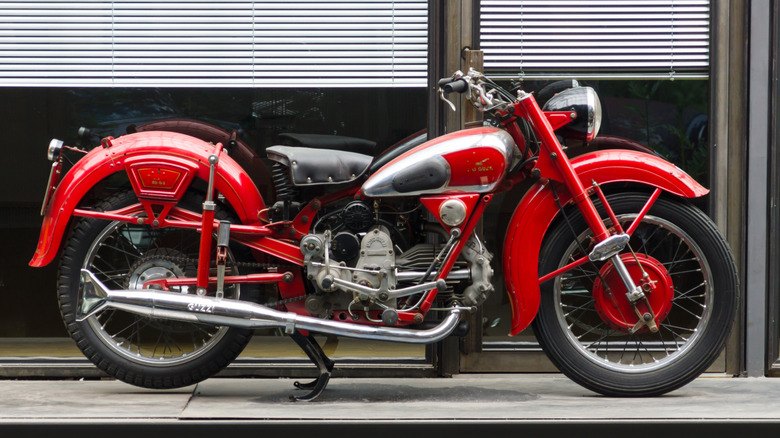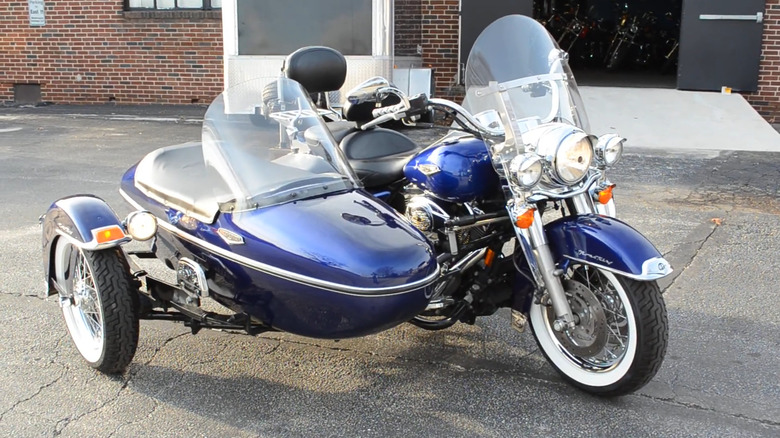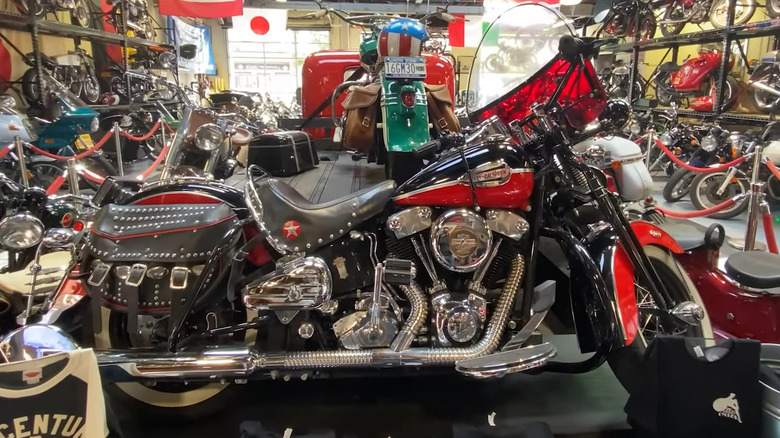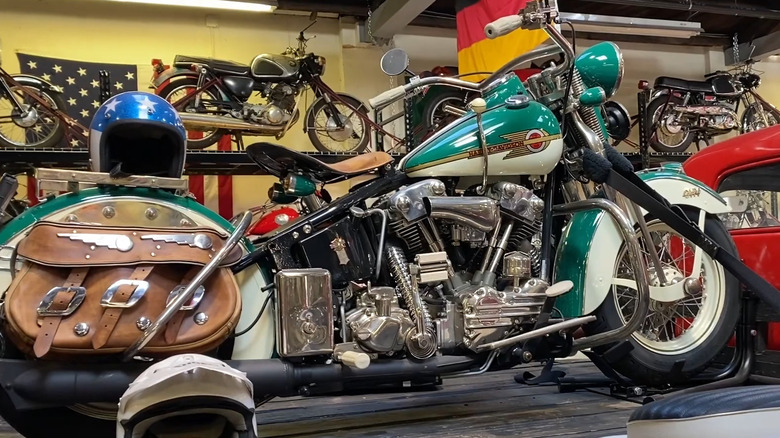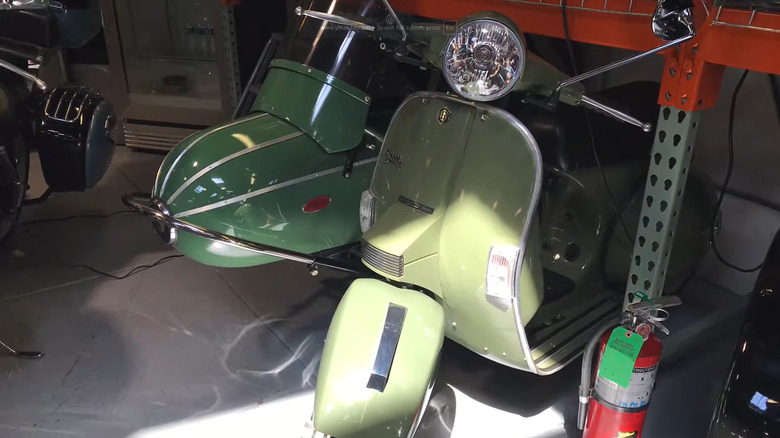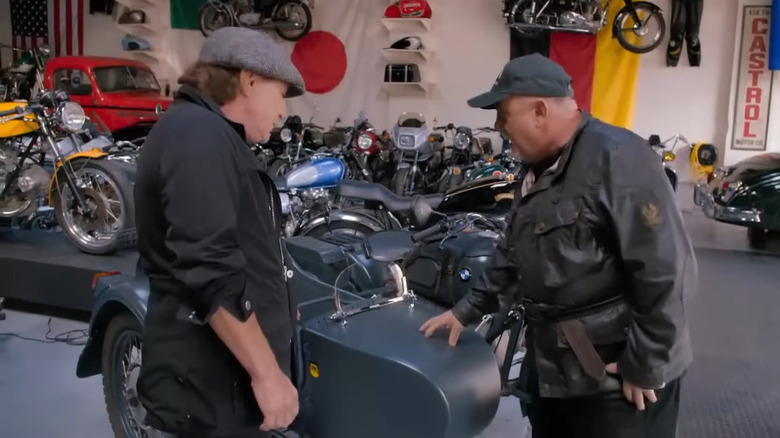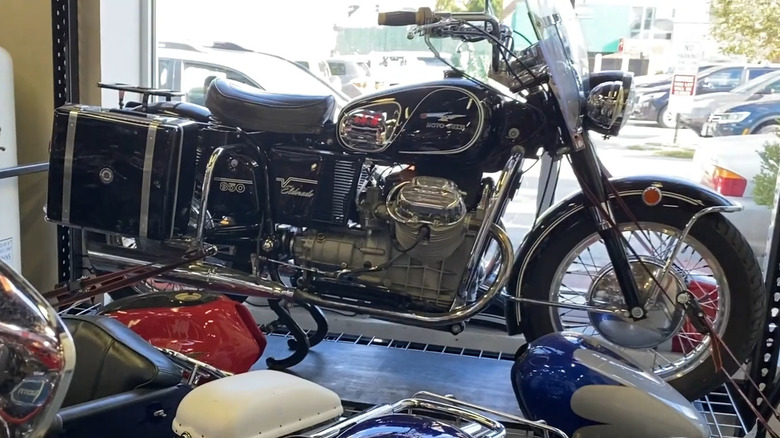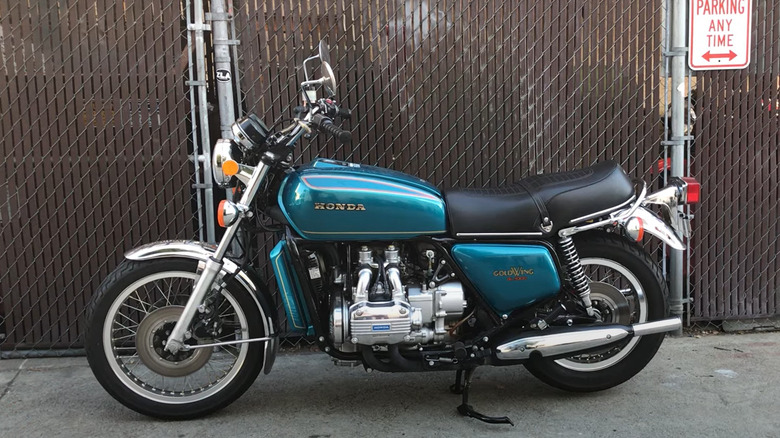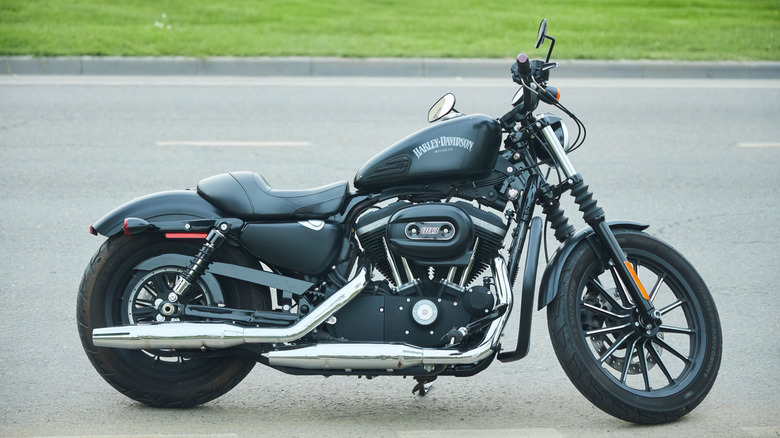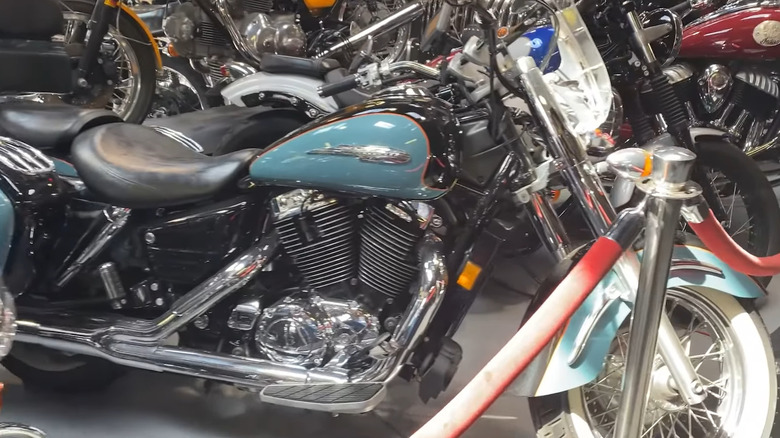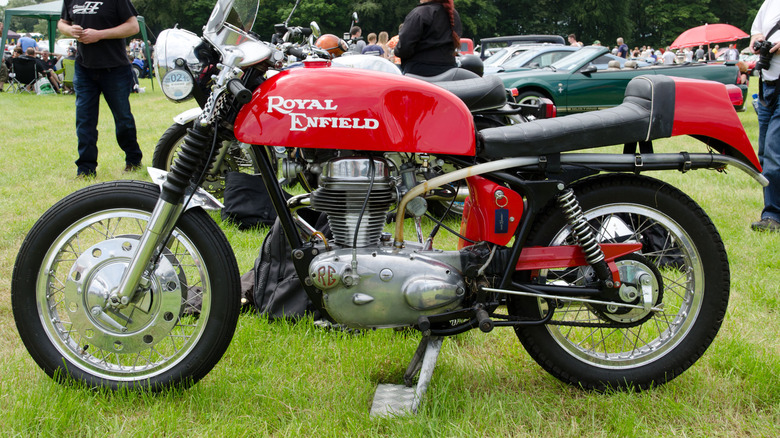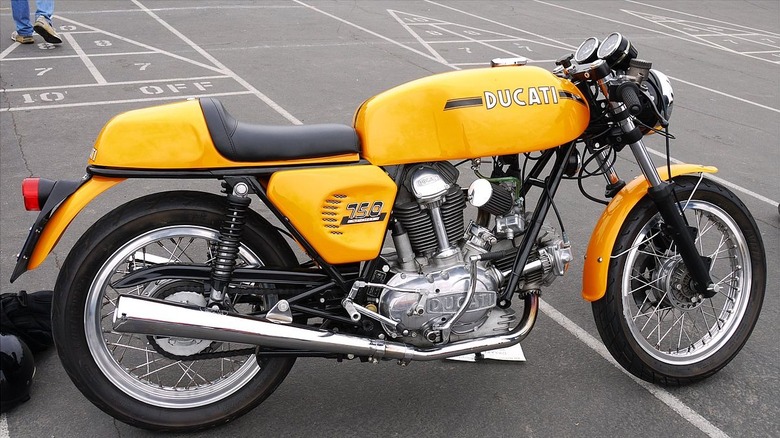13 Must-See Motorcycles In Billy Joel's Collection
Billy Joel, the legendary musician who recently used AI in a music video to turn back time, is auctioning off his motorbike collection. The entire collection, comprising several dozen motorcycles — some rare, some not — is housed in Oyster Bay, New York. Maintaining such a vast number of vehicles does require some doing, which is why Joel had started a company specifically for that purpose way back in 2010, called 20th Century Cycles. His collection also features several cars, like the Citroen 2CV.
While Joel had several concerts and appearances planned for 2025 and 2026, all of them have been canceled following his diagnosis of a brain disorder. The entire collection housed at 20th Century Cycles is coming up for auction in the near future. Joel has confirmed he will not be renewing the lease for the garage in Oyster Bay when it expires this September. Here are 13 gorgeous motorbikes spotted in Joel's collection.
Moto Guzzi Airone
We'd like to say that Moto Guzzi is like the Ferrari of the motorbike world; An Italian company that makes very fast vehicles that look really good, even if no owners really use the full performance. Moto Guzzi is also fond of the color red, as evident in this mint-condition example of a mid-1900s Moto Guzzi Airone. It is powered by a 15 cubic inch (246 cc) single-cylinder engine, which is air-cooled, of course. Performance figures can vary widely, but early models made up to 12 hp by the end of production.
The Airone was produced from 1939 to 1951 in great numbers (alongside the Alce and Trialce) for the war effort. While many models do survive today, courtesy of mass production, the Airone will turn heads wherever it goes. The exposed engine, split exhaust pipe, and painted frame all add to the visual appeal of the bike.
Then there was the single, large, chromed front headlight above a massive Moto Guzzi badge. It wasn't just good looks, though. The inverse telescoping front suspension kept the ride comfortable, while the solid bit of the forks, located below the springs, provided better handling and maneuverability. This unit will certainly garner a lot of attention during the upcoming sale.
Kawasaki Drifter
This bike is a Kawasaki Drifter, but it's easy to confuse it for an Indian Chief because of its similar looks. The Drifter was the flagship cruiser offered by Kawasak, and the original bike came with the same engine as the regular 1500 Vulcan — a 90 cubic inch (1470 cc) engine that had two cylinders and was air-cooled. This unit produced about 84 lb-ft of torque, which was a fairly substantial figure for more than 3 decades ago.
While amazing, the engine in the Drifter was no Harley-Davidson Evolution – the revolution that pulled Harley out of the disastrous AMF years — but it got the job done. Power was impressive at 64 hp, achieved at 4,700 RPM. In the looks department, the bike had a closed rear fender, massive front headlight, supplemented with an auxiliary light on either side of the main unit, tilted rear suspension, and a fairing that would have been taller than most riders. Joel's particular example is finished in a lovely sky-blue color with white accents on the bodywork, complemented by matte-white wheels.
Harley-Davidson Road King Sidecar
The first of three sidecar-equipped bikes in the collection is the Harley-Davidson Road King, which came with a passenger sidecar installed from the factory. It might be the most iconic Harley-Davidson model for two riders, even though the likes of the Tri-Glide Ultra and the Trike Freewheeler have now replaced it. Initially released in 1994, the Road King remains in production and can be purchased new today. In that year, the base MSRP for a new Road King was $25,199, but prices are much more reasonable on the used market, starting at under $9,000 for a recent model.
However, very few will have been optioned with the factory sidecar, making Joel's example a rare, well-maintained grail of sorts. If Joel's is a 2006 model with the 88 engine from Milwaukee House, it had a displacement of 88 cubic inches (1,450 cc) across two cylinders, and was air-cooled. This powerplant produced 86 lb-ft of torque, which is impressive even today, but might have felt a bit less on sidecar-optioned models due to the extra bulk.
Harley-Davidson Springer Knucklehead
One of the best-looking pieces at 20th Century Customs, and one that always gets attention, is the Springer Knucklehead pictured above. Specifically, it is the model with code FXSTS/I, and the "Springer" bit in the name is really justified for once. Joel's Knucklehead features the classic black-on-red paint scheme, complemented by more chrome than anyone could ever need, along with the retro-simple badging that Harley was using at the time.
The front end is dominated by the massive round headlamp, alongside the four auxiliary and indicator light units beside it. The horn is mounted below the main headlamp and forward of inverted, telescopic front suspension bars. Towards the bottom, the bike features a single exhaust that starts off chromed but fades to matte black towards the end. Above this is the studded leather single seat. At the very back is the iconic Harley riveted saddle bag, which features a red trim line to match the rest of the bike.
Harley-Davidson Panhead Hydra-Glide
This one could potentially be the most collectible (not necessarily most expensive) motorcycle that is housed at 20th Century Cycles. It is the Harley-Davidson Hydra Glide — specifically a post-war version that came with the Panhead engine. This engine was legendary, and displaced 74 cubic inches (1,208 cc), and made 55 hp at 4,800 RPM. The head covers looked like pans that had been turned upside down, which is where the name Panhead comes from.
The Panhead is one of the last great Harley engines, produced from 1948 to 1965, before American Machine and Foundry acquired the company and the disastrous Harley-AMF years began. Joel's specific Hydra Glide is collectible for a number of reasons, not least of all because of the rarity of the bike. There's also the mint condition of the unit, as all models at 20th Century Cycles are, plus the provenance. The history of this being a later-stage Hydra-Glide would also play a significant factor, as the next engine to really shine would be the Evolution, which would take approximately 20 more years to develop.
GSC Stella
The second sidecar-equipped motorcycle that we're featuring from Joel's company is not a motorcycle at all. It's a retro scooter. While it may look like a Vespa or Bajaj Chetak, it's actually a Stella, made by the Genuine Scooter Company, and yes, that's its name. Enthusiasts will immediately see the similarities between the Stella and the Vespa P-series of the '70s, and that's because the Stella is meant to be a modern take on that line. The units are manufactured by Lohia Machinery Limited, or LML for short, in India.
The Genuine Scooter Company tests and imports them for sale and use in North America. At the time of writing, GSC offers no less than 13 different models, but not the discontinued Stella. Joel's Stella is finished in a lovely matte green, a shade reminiscent of the military, and is equipped with a passenger sidecar. There were two engine choices through the model run, with the first being a two-stroke unit, which was later upgraded to a four-stroke that was emissions-compliant. A rather quirky design feature is that, although Joel's example does not have a windshield or any sort of fairing, the sidecar passenger has a windscreen that is comically tall. But we suppose that just adds to the quirkiness of such a vehicle.
BMW R75
This BMW R75 in Joel's collection has a historic origin story. While BMW has been making motorcycles long before this model was introduced — having released its first bike way back in 1923 — the R75 was designed explicitly for the Nazis. As part of an order from the Wehrmacht Ordnance Office, both BMW and Zundapp were told to make a fast, maneuverable bike that could be equipped with a sidecar to assist the war effort. BMW made the R75, and Zundapp made the KS 750. The bikes shared about 60% to 70% of components.
For its part, the R75 came with a 45 cubic inch (745 cc) engine featuring two cylinders in a four-stroke configuration, paired with a single-plate dry clutch. All that put together gave the R75 a total output of 26 hp at 4,000 RPM, which was more than enough to dig the lightweight bike and its sidecar out of any situation the war threw at it. Joel's model has the iconic sideways-mounted number plate on the front fender, with a storage compartment housed between the sidecar and the bike chassis, and a spare tire holder on the back of the sidecar.
Moto Guzzi 850 California
The next one is a bike with another interesting origin story. The 850 California by Moto Guzzi emerged from a collaboration between Moto Guzzi and the Los Angeles Police Department. A sergeant named Scotty Henderson had visited the factory in 1969 to assist Moto Guzzi in releasing a version of its V7 roadster that would be used by the police. Some changes that the LAPD version got were a larger engine, a kick-stand that could be deployed without getting off, and the gear-change foot lever was moved to the left.
It also came with a bulletproof windscreen, and it was a massive success. So much so that Moto Guzzi released a civilian version called the V7 Ambassador shortly after. In 1972, the engine displacement was increased to 52 cubic inches (844 cc), and thus, the Moto Guzzi 850 California Touring was born, sometimes referred to as the Ambassador. There would be two significant upgrades to this line: one in 1972 (as mentioned above) and another in 1979. The engine on the 850 was a rumbling V-twin unit that produced 55 hp at 6,100 rpm.
Honda Gold Wing GL1000
It's fair to say that the Honda Goldwing GL1000 was the bike that really put Japanese tourers on the map. Never before had there been a true Harley-killer from the land of the rising sun, but now there was. The GL1000 would debut in 1975 and would remain in production until 1980, which is when it was replaced by the much-upgraded and more powerful GL1100.
In this time, Harley was just about unentangling itself from the clutches of the American Machine and Foundry, and it would not be until 1984 that Harley-Davidson would manage to claw back some dignity via the launch of the Evolution engine in the Softail. So, safe to say that from '75 to '84, one of the most accessible big-rumbler cruisers was the Gold Wing, which had a decade to cement itself into the market, so it was a massive success. The original Mk1 Gold Wing came with a 61 cubic inch (999 cc) boxer four-cylinder liquid-cooled engine that made 78 hp and 61 lb-ft of torque. It was also supremely comfortable, while remaining manageable to ride thanks to state-of-the-art suspension and brakes for the time; truly a legend.
Harley-Davidson Sportster Forty-Eight
One of the few modern bikes in the collection is the Harley-Davidson Forty-Eight, identified by its model code, XL1200X. It first came into production in 2010, and remained in production until very recently, having been discontinued in 2022. While in production, the Sportster 1200 came with the Evolution engine, which displaced 73 inches (1,202 cc) across two cylinders, and was mated to a five-speed transmission. It had a chain final drive, as is the industry standard these days, and produced 66 hp at 6,000 RPM, alongside an impressive 71 lb-ft of torque from 3,500 RPM.
In addition, the bike had an economy of 48 mpg, which, in conjunction with its 2.1-gallon fuel tank, meant that riders could achieve a somewhat limited range of 100 miles between fill-ups. Joel's example, although quite new compared to the others, is very well maintained nonetheless. It features the classic silver-on-black accented paint scheme, complemented by extensive chrome accents. The iconic dual exhausts are finished in chrome, as are all the exposed parts of the engine, along with other assorted bits and bobs across the bike.
A 2022 model would have run buyers a cool $12,299 as base MSRP when it was new, though prices on the secondary market are more acceptable. A 2018 model in good condition can be had for around the $6,000 mark, making it a far better value than Joel's, which will undoubtedly smash that price at auction.
Honda Aero 1100
The Indian Chief that we talked about earlier directly inspired this bike, the Kawasaki Vulcan 1500 Classic Tourer. This is evident from just glancing at the two models, as the Vulcan copies several of the most notable aesthetics of the Indian. For instance, it features massively flared arches, a curvaceous seat, a massive windshield, minimal fairing on the front, and spoked wheels, which were, at the time, somewhat out of fashion. However, one significant difference between the two was the engine – the Kawasaki had a significantly improved model.
The Vulcan 1500 featured a twin-cylinder engine with a displacement of 90 cubic inches (1,470 cc) and was liquid-cooled. It was mated to a five-speed transmission that sent power to the rear wheel via a shaft-final drive assembly. And it was a lot of power too, coming in at 64 hp at 4,700 RPM and 83 lb-ft of torque from 3,000 RPM, which, for a bike of this size, meant plenty of oomph from basically any speed. The Vulcan 1500 Classic Tourer was first introduced to the public in 1988, and some versions (with smaller engines) are still available today. Joel's example is finished in an amazing matte-ish teal color, with a passenger backrest, and is also equipped with whitewall tires to finish off that retro aesthetic.
Royal Enfield Continental GT 250
Though it looks like a Ducati or BMW, this gorgeous bit of kit in Joel's collection is actually a Royal Enfield Continental. Specifically, it is the GT (Grand Touring) 250 model, which was in production for a brief period between 1963 and 1967. Through this production range, it had many different iterations and was also a popular bike to turn into a cafe racer motorcycle. Joel's Continental 250 features a custom fairing and windscreen on the front that are specific to cafe racer styles.
It is finished in a striking shade of red. This generation of Continental GT 250s came with a single-cylinder engine that displaced 250 cc, making 21 hp at 7,500 RPM. As you can clearly see from the picture, the bike has an inverted telescoping fork, which, as we explained earlier, makes the ride more comfortable and gives the bike better handling at the same time. There are chrome accents on the fuel tanks, which also bear the Royal Enfield badging, bringing the overall aesthetic together really nicely.
Ducati 750 Sport
The last bike is the Ducati 750 Sport. It was produced between 1972 and 1973, at a time when the base model 750 GT was already a very popular bike. So, when the 750 Sport was released as a souped-up version of that GT bike, it was an instant hit. A 46 cubic inch (748 cc) engine that made 62 hp at 8,200 RPM with a weight of just 408 pounds, it was a monster. Coupled with the five-speed transmission, dual carburetors, and chain final drive, the 750 Sport was, as most Ducati bikes are, really performant.
Joel's example is finished in Giallo something-or-the-other (we don't know the actual shade name), and is quite arresting, visually. We don't have any way of describing it other than to say that it is a stock cafe racer, because that's the aesthetic that it is clearly going for. Ducati lettering, along with a racing stripe on the fuel tanks, leads into the single-rider seat with a small hump towards the end.
Overall, it's a fantastic-looking bike that boasts the performance to match its looks, and we'll likely never see this kind of bike — or any of these bikes — on the modern market. Surely not with a bona fide Billy Joel handprint on the throttle.
